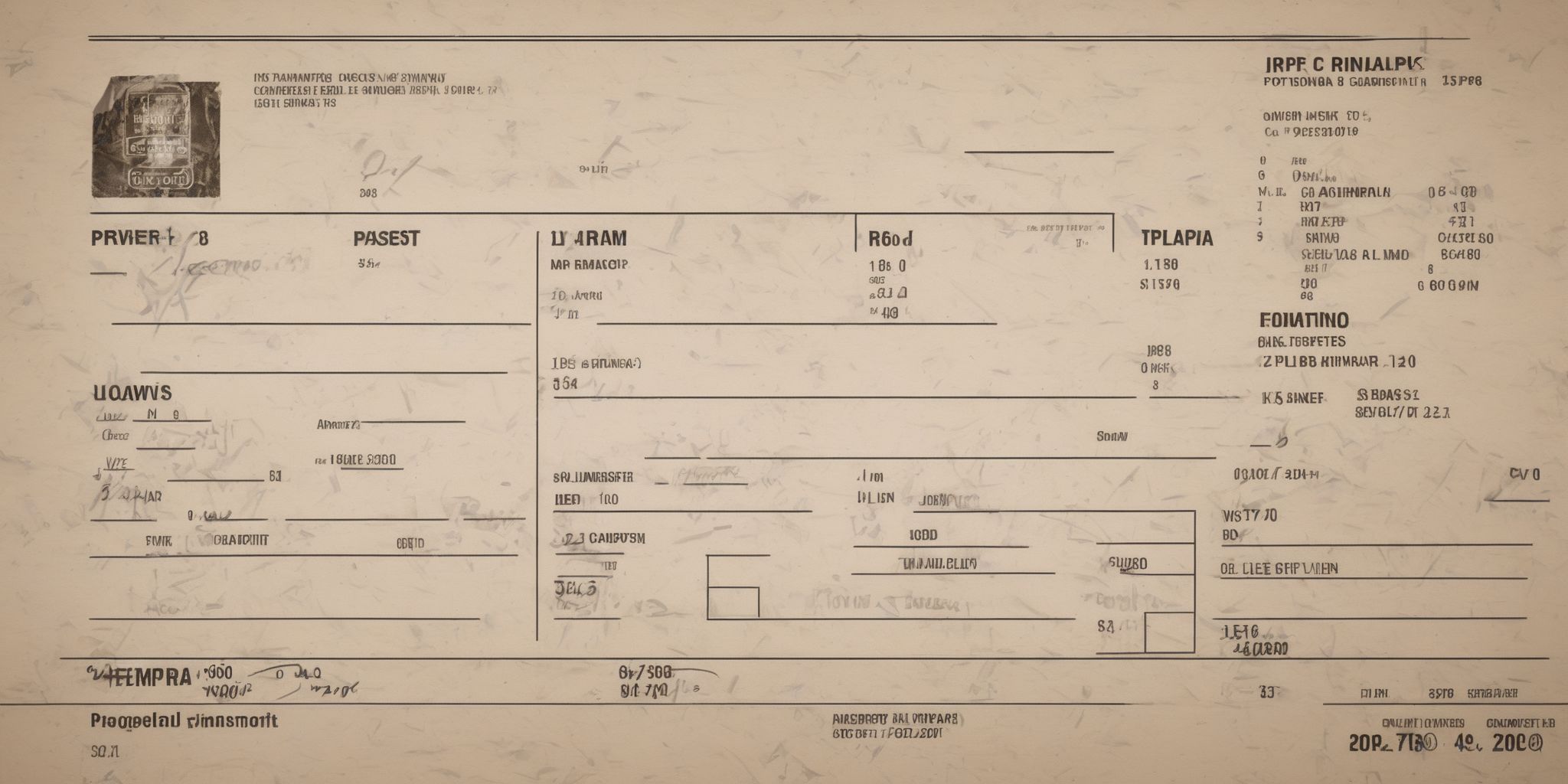The Hedging Process Unveiled: Step-by-Step Guide to Effective Risk Mitigation
Risk mitigation is no longer a mere buzzword tossed around by corporate executives; it has become an essential aspect of managing uncertainties in today's dynamic business landscape. Within this realm, hedging, a strategic technique to minimize potential losses, has emerged as a game-changer. So, buckle up and get ready to dive into the intricate world of risk mitigation as we unveil the step-by-step guide to effective hedging. From the basics to the advanced strategies, we've got you covered.
Let's embark on this enlightening journey to unravel the mysteries of the hedging process.
What is hedging?
Hedging is a risk management strategy used by businesses to protect themselves against potential losses. It involves taking opposite positions in related financial instruments to offset the risk of adverse price movements.
For example, if a company expects the price of a commodity to increase, it can hedge by taking a position that will profit from the price decrease. In this way, any losses incurred in one position are offset by gains in the other. By implementing effective hedging strategies, businesses can mitigate potential risks and stabilize their financial performance.
Importance of effective risk mitigation
Effective risk mitigation is crucial for any organization engaged in financial markets. By implementing a well-defined hedging process, companies can protect themselves from adverse price movements, volatility, and uncertainties. It allows businesses to manage their exposure and safeguard profitability.
Understanding the Hedging Process
Identifying and assessing risks
Identifying and assessing risks is a fundamental step in the hedging process. It involves thoroughly analyzing potential threats that could impact the organization's financial stability. By carefully examining market trends, economic indicators, and industry-specific factors, businesses can uncover areas of vulnerability.
For example, in the foreign exchange market, a company may identify currency fluctuations as a risk. They can assess their exposure by considering the volume of international transactions and the impact of currency fluctuations on profitability.
Assessing risks allows businesses to prioritize their hedging efforts, focusing on areas that pose the greatest threat. This step helps create a strong foundation for developing a successful hedging strategy.
Setting risk management objectives
Setting Risk Management Objectives in the Hedging Process:
- Define specific goals: Clearly articulate the objectives that the hedging strategy aims to achieve, such as protecting against market fluctuations or minimizing currency risk exposure.
- Consider the organization's risk appetite: Assess the level of risk tolerance and determine the acceptable degree of exposure when setting objectives. This will help strike the right balance between risk mitigation and potential rewards.
- Align with overall business objectives: Ensure that the risk management objectives align with the broader goals of the organization, such as maintaining profitability, improving cash flow, or enhancing competitiveness.
- Take into account market conditions: Consider the current market environment and potential future trends to set realistic and relevant risk management objectives.
- Tailor objectives to different types of risks: Differentiate objectives based on the specific risks being hedged, whether it's foreign exchange risk, commodity price risk, or interest rate risk.
Remember, to effectively mitigate risks through hedging, it is crucial to have clear and actionable risk management objectives that align with the organization's overall goals.
Developing a hedging strategy
Developing a hedging strategy is a crucial step in the hedging process. It involves carefully analyzing the identified risks and determining the appropriate approach to mitigate them. This begins with setting clear objectives that align with the company's risk appetite and financial goals. A well-developed strategy should consider factors such as market conditions, risk tolerance, and available hedging instruments.
For instance, if a company is exposed to foreign exchange risk, it may choose tohedge by using forward contracts or options.
Additionally, diversification across different asset classes or geographic regions can further enhance the effectiveness of the strategy. Regularly reviewing and adjusting the strategy is essential to ensure it remains aligned with changing market dynamics.
Execution of the Hedging Process
Selecting hedging instruments
Selecting the right hedging instruments is a crucial step in the hedging process. It requires understanding the specific risks being hedged and evaluating various instruments available in the market. Consider factors like liquidity, cost, and correlation with the underlying risk.
For example, if hedging against currency fluctuations, options contracts can provide flexibility, while futures contracts offer simplicity. It's important to assess the pros and cons of each instrument and choose the one that best aligns with your risk management objectives. Remember to regularly review and adjust your chosen instruments based on evolving market conditions to ensure effective risk mitigation.
Establishing hedging positions
Establishing hedging positions is a fundamental aspect of the hedging process. It involves determining the appropriate instruments and quantities to use in order to offset or minimize the identified risks. This step requires a careful analysis of the risk exposures and understanding of different hedging instruments available.
For example, when hedging currency risk, options contracts can be used to lock in exchange rates. Similarly, futures contracts may be utilized to hedge against fluctuations in commodity prices. It is important to consider factors such as liquidity, cost, and correlation with the underlying risk when establishing hedging positions. Striking the right balance between the desired level of protection and cost efficiency is crucial in implementing an effective hedging strategy.
Monitoring and Adjusting Hedging Positions
Regularly reviewing the hedging strategy
Regularly reviewing the hedging strategy is a fundamental aspect of the hedging process. It allows businesses to assess the effectiveness of their current approach and make necessary adjustments based on market conditions and risk exposure. By consistently monitoring the performance of their hedging positions, companies can identify any deviations from their objectives and take timely corrective actions.
This helps ensure that the hedging strategy remains aligned with the organization's risk management goals. For instance, if an analysis shows that the chosen hedging instruments are not providing the desired level of protection, adjustments can be made by exploring alternative options or modifying the existing positions. Regular reviews enhance the agility and adaptability of the hedging strategy, allowing businesses to optimize risk mitigation efforts.
Monitoring market conditions
Monitoring market conditions is a crucial aspect of the hedging process. By staying informed about the relevant economic indicators, market trends, and geopolitical events, companies can make informed decisions regarding their hedging positions. This includes tracking interest rates, exchange rates, commodity prices, and other market variables that can impact their exposure to risk.
For example, if a company is hedging against currency risk, they need to constantly monitor exchange rates to determine if adjustments to their hedging strategy are necessary. Similarly, if a company is hedging against commodity price risk, they should keep a close eye on the supply and demand dynamics in the market. By actively monitoring market conditions, companies can adapt their hedging positions to mitigate risks effectively.
Making necessary adjustments
Making necessary adjustments is an integral part of the hedging process. It involves regularly monitoring market conditions and evaluating the effectiveness of your hedging strategy. Adjustments should be made when there are changes in risk exposure, market conditions, or the overall financial landscape.
For example, if a hedging instrument is no longer providing the desired risk mitigation, it may be necessary to switch to a different instrument.
Additionally, if the company's risk management objectives or market conditions change, adjustments may be required to align the hedging positions accordingly. By regularly assessing and adapting your hedging strategy, you can optimize risk mitigation and maintain a more secure financial position.
Examples of Effective Hedging Strategies
Hedging process
- One effective hedging strategy is currency hedging, which helps companies mitigate foreign exchange rate risks. For example, companies can use forward contracts to lock in exchange rates for future transactions, reducing uncertainty and protecting against potential losses.
- Another effective hedging strategy is commodity hedging, commonly used by companies exposed to volatile commodity prices. Through futures contracts or options, companies can secure fixed prices for commodities, ensuring stability in their supply chain and protecting against price fluctuations.
- Hedging strategies can also involve diversifying investments across different asset classes to reduce overall portfolio risk. This approach spreads risk across various market segments, reducing the impact of losses in specific areas.
Over to you
This article provides a step-by-step guide on effective risk mitigation through the process of hedging. It explores the different stages involved and offers insights into each step, breaking down complex concepts into easy-to-understand terms. The article aims to help individuals and businesses understand and implement hedging strategies to minimize potential losses and protect against market volatility.
Whether you're new to hedging or looking to enhance your risk management techniques, this comprehensive guide offers valuable information to navigate the hedging process successfully.


